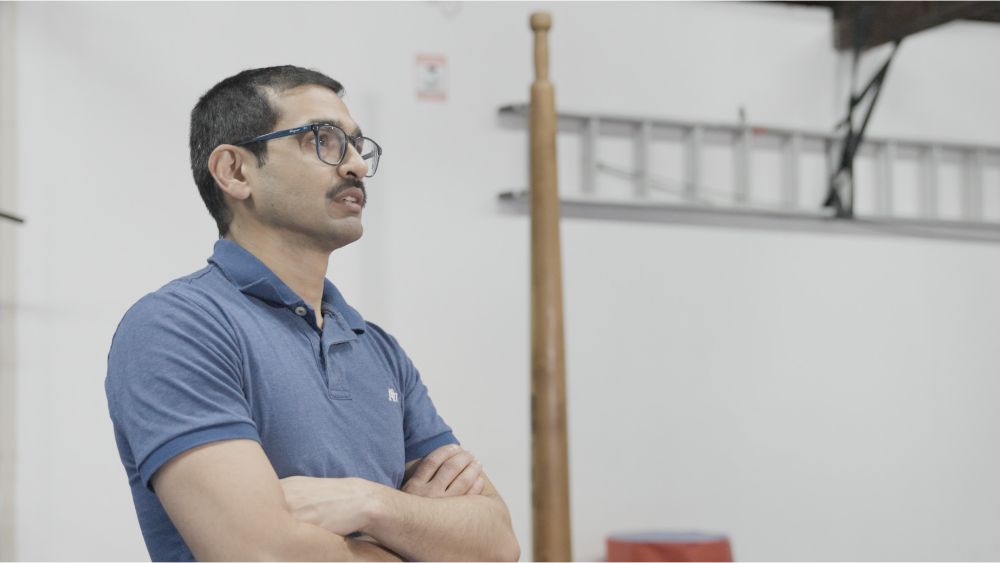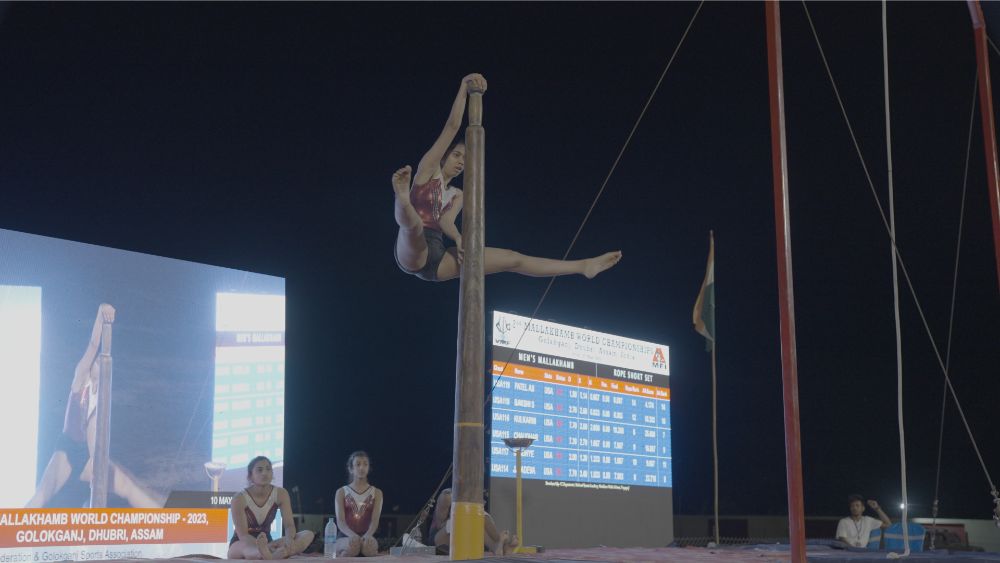
Mallakhamb: Unveiling Its History, Origin, Special Qualities, and More
Mallakhamb, a captivating and ancient Indian sport, is a unique combination of gymnastics, yoga, and aerial acrobatics that has been captivating audiences for centuries.
In this article, we’ll explore the intriguing history and origin of Mallakhamb, and learn its special qualities that set it apart from other sports, and sheds light on its enduring popularity and cultural significance.
The Rich History of Mallakhamb
Mallakhamb has a rich and storied history that dates back centuries. Its origins can be traced to the 12th century in the Indian state of Maharashtra. The term “Mallakhamb” is derived from the Marathi words “Malla” (meaning wrestler) and “Khamb” (meaning pole), reflecting its primary association with traditional Indian wrestling.
An Art Form Rooted in Wrestling Traditions
Initially, Mallakhamb served as a training regimen for wrestlers to enhance their strength, flexibility, and agility. The sport provided wrestlers with a unique way to build muscle and improve their physical conditioning. The rigorous exercises performed on the wooden pole also helped them develop exceptional balance and coordination, qualities essential for success in the wrestling arena.
Ancient Texts and References
References to Mallakhamb can be found in ancient Indian texts and scriptures. One of the earliest mentions of Mallakhamb is found in the “Manasollasa,” a Sanskrit encyclopedia written by King Someshvara III in the 12th century. This text provides detailed instructions on how Mallakhamb was practiced and its significance in physical fitness and well-being.
The Influence of Indian Mythology
Mallakhamb’s historical significance also extends to Indian mythology. It is believed that Lord Hanuman, a revered deity in Hinduism, played a significant role in popularizing Mallakhamb. Hanuman is often depicted performing extraordinary feats of strength and agility, which bear a striking resemblance to the exercises performed on the Mallakhamb pole. This association with a revered deity added to the cultural importance of the sport.
The Essence of Mallakhamb
Mallakhamb is a captivating sport that seamlessly blends elements of strength, balance, flexibility, and grace. Its unique characteristics have contributed to its enduring appeal and widespread recognition.
The Mallakhamb Pole
At the heart of Mallakhamb is the vertical wooden pole, which can vary in height. Athletes perform a wide array of gravity-defying exercises and poses on this pole, utilizing it as their sole apparatus. The pole is traditionally made of polished teak wood, ensuring a smooth surface that facilitates a secure grip for the athletes.
A Fusion of Yoga and Gymnastics
One of the distinctive qualities of Mallakhamb is its integration of yoga and gymnastics. Athletes perform a series of asanas (yoga poses) on the pole, blending the spiritual and physical aspects of yoga with the strength and agility of gymnastics. This fusion sets Mallakhamb apart as a holistic practice that enhances both physical and mental well-being.
Varied Forms and Styles
Mallakhamb comes in various forms and styles, each with its own set of exercises and challenges. Some of the most popular Mallakhamb styles include Rope Mallakhamb, Pole Mallakhamb, Hanging Mallakhamb, and Rope & Pole Mallakhamb. These styles cater to practitioners of different skill levels, making the sport accessible to a wide range of enthusiasts.
The Mallakhamb Athlete
Mallakhamb athletes are individuals with exceptional physical prowess, flexibility, and discipline. The journey to becoming a skilled Mallakhambist is marked by rigorous training, dedication, and a deep understanding of the sport.
Physical Fitness and Endurance
Mallakhambists undergo intensive physical conditioning to build strength, flexibility, and endurance. They engage in regular strength training, cardiovascular exercises, and flexibility routines to prepare their bodies for the demanding exercises on the pole.
Mental Resilience
The mental aspect of Mallakhamb is equally crucial. Mallakhambists cultivate mental resilience, focus, and concentration to perform complex maneuvers on the pole. The sport requires a strong mind-body connection, and athletes develop the ability to remain calm under pressure.
Rigorous Training Regimens
Mallakhamb training involves a structured regimen of exercises and poses that gradually build an athlete’s skill and proficiency. Athletes start with basic poses and progressively move to more advanced techniques. This incremental approach ensures that practitioners build a strong foundation before attempting more complex routines.
Mallakhamb: Beyond Sport
Mallakhamb transcends its role as a mere sport; it is deeply ingrained in Indian culture and tradition. The sport has a profound impact on various aspects of Indian society.
Cultural Significance
Mallakhamb has cultural significance that extends beyond physical fitness. It is often performed during festivals and celebrations, showcasing the art form to a wider audience. This not only preserves the tradition but also introduces it to the younger generation.
Educational Institutions and Mallakhamb
Mallakhamb is a prominent feature in many educational institutions across India. It is included in physical education curricula to promote physical fitness and overall development. The sport’s popularity in schools and colleges has contributed to its continued relevance.
Mallakhamb on the International Stage
In recent years, Mallakhamb has gained international recognition and has been introduced to audiences around the world. The sport’s inclusion in various international gymnastics and acrobatics events has opened new doors for Indian athletes to compete at the global level.
Promoting a Healthy Lifestyle
Mallakhamb’s emphasis on physical fitness, mental well-being, and discipline promotes a healthy lifestyle. Many practitioners and enthusiasts have adopted Mallakhamb as a means to lead a balanced and holistic life.
Mallakhamb Today: A Glimpse into the Modern Era
While rooted in tradition, Mallakhamb continues to evolve and adapt to the demands of the modern era. Advancements in equipment and training methods have allowed the sport to flourish.
Modern Mallakhamb Equipment
In contemporary Mallakhamb, athletes may use advanced materials for the pole, such as stainless steel or fiber-reinforced plastic, providing enhanced safety and durability. These improvements allow athletes to perform even more complex and daring maneuvers.
International Recognition and Competitions
Mallakhamb has made its presence felt on the global stage. International competitions, workshops, and exhibitions have allowed Mallakhambists to showcase their talents and represent India on the world platform. This has spurred greater interest and participation in the sport.
Mallakhamb for All Ages
Mallakhamb is not limited to the young; it’s a sport for all ages. While it may be physically demanding, practitioners of various age groups can adapt their training to suit their capabilities. This inclusivity fosters a sense of community and encourages individuals to embrace a healthy and active lifestyle.
Ending Thoughts
Mallakhamb, a sport born out of the traditions and cultural fabric of India, continues to thrive and capture the imagination of people worldwide. Its unique blend of physical prowess, mental discipline, and cultural significance makes it a remarkable and enduring art form.
As Mallakhamb evolves with the times, it carries with it the weight of history and tradition, enriching the lives of those who practice it and inspiring admiration among those who witness its beauty. Whether performed in ancient temples, modern gyms, or international arenas, Mallakhamb remains a testament to the enduring power of human potential and the remarkable journey of a sport that transcends borders and time itself.


